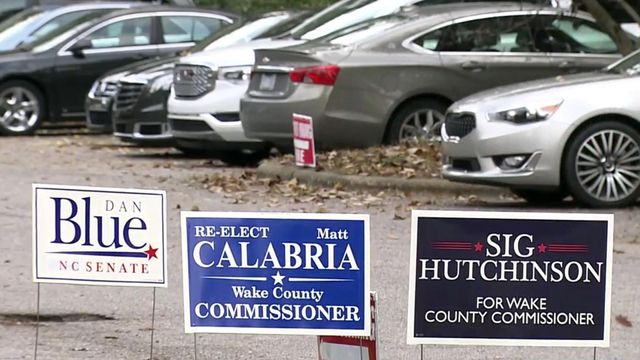'Blue wave' could stick around in Wake County
Almost every Republican candidate in Wake County was defeated this week in what party leaders called a "brutal" election. Several factors indicate it could be a long-term trend.
Posted — UpdatedJust eight years ago, Republican candidates won 13 of 25 competitive partisan races on the 2010 Wake County ballot. This year, out of 32 competitive partisan races, GOP candidates won only two: a state Senate seat and a District Court bench. The few other Republicans who won were in nonpartisan races or were unopposed.
"Tuesday was brutal, and we are still looking at the data to see what we can learn and how we can adapt," said Wake County Republican Party Chairman Charles Hellwig.
Hellwig estimated Democrats turned out 90 percent of their 2016 base in Wake County, while the GOP turned out only 75 percent.
"I think 2020 will be a more similar turnout to 2016 than 2018 was, and that will change the landscape in many parts of Wake County," he said.
North Carolina State University political science professor Steve Greene has his doubts.
"Obviously, Wake County is one of the most educated parts of the state," Greene said. "So, an area with so many educated voters has clearly shifted pretty strongly in the Democratic direction."
Demographic makeup is another headwind for Republicans in Wake County. According to data provided to WRAL News by state demographer Michael Cline, Wake County's net population growth since 2010 accounts for about a quarter of North Carolina's net growth. The county trends younger than the state, and it's also diversifying far more rapidly.
"Everything that is the Democratic coalition, which is younger voters, which is more diverse, minority voters, which is college-educated professionals, Wake County is becoming more of all these things," Greene said. "So, certainly for the short term, the Republican party is in huge trouble in Wake County."
Greene added that Wake County's Democratic turnout was likely boosted further by disapproval of President Donald Trump. Hellwig agreed.
"We have challenges in urban counties for sure, and we need to spend time talking about serious solutions – and we will," Hellwig said in a statement to WRAL. "But clearly, there is a difference between an angry, enraged, and thus energized base versus a more complacent group without the same forces driving them to vote.
"I am hopeful that, when our base is as energized in 2020 as their base was in 2018, we will win back some General Assembly seats and other races, while contributing a quarter-million votes for our statewide GOP candidates," he said.
Greene suggested Republicans might be better served to focus their resources on more rural counties, where the party is gaining ground. Political trends have a way of changing, sometimes fairly rapidly, he added.
"We're such a 50/50 state," he said. "We're so closely divided. But that means certain areas, like Wake County, are very Democratic, and other areas are very Republican. For now, this one is a very Democratic area."
Related Topics
• Credits
Copyright 2024 by Capitol Broadcasting Company. All rights reserved. This material may not be published, broadcast, rewritten or redistributed.






